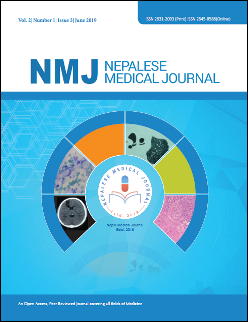Comprehensive Radiological Assessment of Sub-axial Spinal Injury
DOI:
https://doi.org/10.3126/nmj.v2i1.24351Keywords:
Computed tomography, Magnetic Resonance Imaging, Radiology, Spine, TraumaAbstract
Radiologists frequently interpret cross-sectional imaging of the spine in the setting of trauma. Mechanical stability of the traumatised spine is the single most important factor which guides further management.
Several classification systems have been developed over the past to assist radiologists to judge the potentially unstable injuries. The radiologists are arguably most familiar with Denis system of classification which is based on injury morphology and mechanism. This system has been criticised for being too simple, not prognostically valuable and lack of consideration of patients' neurological status. AO (Arbeitsgemeinschaft für Osteosynthesefragen) and TLICS (Thoracolumbar Injury Classification and Severity Score ) classification systems are the next major evolutions which highlight the importance of the posterior ligamentous complex (PLC) and neurological status of the patients in predicting the potentially unstable fracture.
The aim of this pictorial review is to familiarise radiologists with newer classification systems to improve their image interpretation skills and promote efficient communication with spinal surgeons. The pictorial examples are intended to illustrate the various injury types and how to classify them according to the aforementioned classification systems.
Downloads
Downloads
Published
How to Cite
Issue
Section
License
This license enables reusers to distribute, remix, adapt, and build upon the material in any medium or format, so long as attribution is given to the creator. The license allows for commercial use.
Copyright on any article published by Nepalese Medical Journal is retained by the author(s).
Authors grant Nepalese Medical Journal a license to publish the article and identify itself as the original publisher.
Authors also grant any third party the right to use the article freely as long as its integrity is maintained and its original authors, citation details and publisher are identified.




